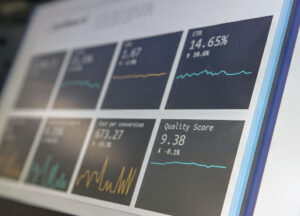Many industries are excited to apply artificial intelligence (AI) to an increasingly broad assortment of use cases. One emerging possibility involves using such technology to analyze colors.
Keeping the Roads Safer
“AI already powers many features on today’s modern automobiles. Researchers have developed algorithms that can detect tired or angry drivers.”
The associated car features can cause steering wheel vibrations to keep someone awake or suggest when someone should take a break to improve their mood.
Some cars combine artificial intelligence with smart sensors to improve maintenance processes. The collected data can alert drivers or mechanics to potential issues before visible signs of problems appear.
Many of the AI-based systems that catch traffic violations have color analysis features. Consider license plate scanning. Mud could partially obstruct the numbers or digits or an accessory such as a trailer hitch could block them, depending on the camera’s angle. Plus, some offenders intentionally drive with fake or stolen license plates.
Adding a color-recognition element to traditional license plate scanning creates a more detailed picture. It could capture the vehicle and plate hue, providing additional information for authorities to use when locating the driver. Such systems increase road safety by making it more difficult to break the rules unnoticed.
Recognizing Paint-Based Specifics
AI is well-equipped to receive large amounts of data about color variations. The algorithms can handle massive groups of information and find patterns within it. Those characteristics have caused some people to develop AI tools that analyze colors for the paint industry.
Sherwin-Williams created a tool that uses AI voice recognition to let people describe their ideal shades with conversational phrases. They could ask for a pink that reminds them of a fiery sunset or a hue reminiscent of a particular historical era.
Human eyes can see millions of shades, but describing them isn’t easy. That’s due to differences in how people perceive them relative to personal reference points. While one person might call a color a medium-blue hue, another might consider it much darker.
However, this voice-recognition tool allows people to give progressively more descriptive prompts once they see some of the earliest possibilities. In this case, the AI must analyze people’s phrases and translate them into a colorful output.
Some paint manufacturers also use AI color analysis tools to spot defects in paint shops. When painted items don’t meet minimum standards, artificial intelligence can tell whether it’s due to a one-time or ongoing issue. Some high-tech setups use AI and robots, allowing people to set parameters in the system and program the equipment to paint surfaces the same way every time. Such offerings support quality control by upholding consistency.
Verifying People’s Identities
AI facial recognition features are inside many smartphones, and retailers increasingly use them to help customers pay for their goods. However, a growing body of evidence suggests AI is less effective at correctly recognizing people with darker skin.
Sometimes, training data bias is to blame. If the AI isn’t exposed to a wide variety of skin tones in training, it will have more difficulty accurately detecting some of them. Another issue is that these systems often use lasers, which work best when light reflects from specific skin tones.
AI color analysis tools that scrutinize skin color don’t account for seasonal differences, either. If someone spends eight hours a day working outside for the whole summer, they’ll almost certainly be significantly tanner at the end of the season.
Fortunately, work is underway to improve things. Harvard University professor Ellis Monk developed a 10-tone skin scale for better inclusivity. Previously, the most frequently used option only had six colors represented. Part of the development of the new scale involved surveying thousands of adults to learn if they felt the more recent version was more realistic and reflective of society. Most did, especially if they were in less-represented demographic groups.
Diagnosing Illnesses
Doctors use patients’ color-based attributes to diagnose problems ranging from frostbite to anemia. Many physicians view AI as a valuable tool for helping them confirm patients’ ailments faster, resulting in fewer treatment delays. Some artificial intelligence applications are incredibly creative. Although many are still in the early development stages, they could open new opportunities for AI color analysis.
“In one case, a Tokyo University of Science team developed an AI-powered option for measuring people’s heart rates by examining facial color.”
This approach focused on the blood volume pulse, which causes small changes over time, noticeable in video footage. The researchers developed a system that maintains accuracy despite environmental light changes.
Elsewhere, researchers from the University of South Australia used AI to create a tool that checks a patient’s tongue color as a diagnostic step. When the group combined high-tech imaging and machine learning, they developed a highly effective option.
The completed tool was highly accurate in diagnosing more than 10 diseases by solely looking at a patient’s tongue. It also sent informative text messages to patients or their health care providers.
Understanding Limitations
Progress in AI color analysis is undoubtedly exciting. However, even the most advanced systems have imperfections and may make errors. Anyone thinking about using artificial intelligence tools should always do so along with personal justice and expertise. They’ll get the best results by using AI as a supplemental tool rather than allowing it to make all the decisions.









